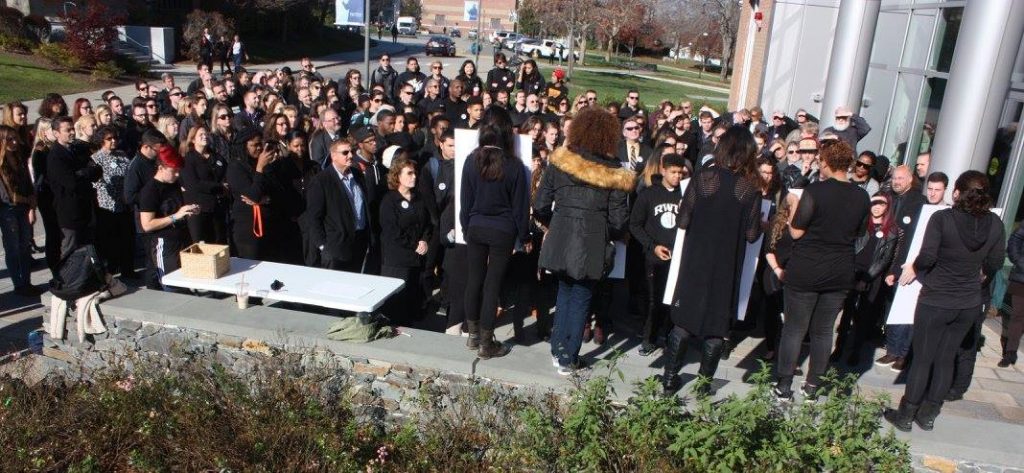On Nov. 16, students at Roger Williams University organized what they referred to as “BlackOut” (pictured below) – a noontime demonstration in support of the students at the University of Missouri whose protests against the indifference of some senior administrators at the university to claims of racism on the campus led to the resignation of the system president and the campus chancellor.
RWU student leaders spoke and presented a proposed list of action steps they wanted to see taken by our campus and then invited me to speak. The prevailing mood at the demonstration was collaborative and civil – no “demands” were made, and no one’s resignation was sought. I was very proud of our students, and I told them that we would form a representative task force to develop a plan, with timelines and metrics, to address their entirely reasonable concerns. Then we returned to our offices and classrooms to resume the work of giving and receiving a university education. The local newspaper wrote a positive editorial about the event (“RWU students’ intelligent requests,” Bristol Phoenix, Nov. 19, 2015).

